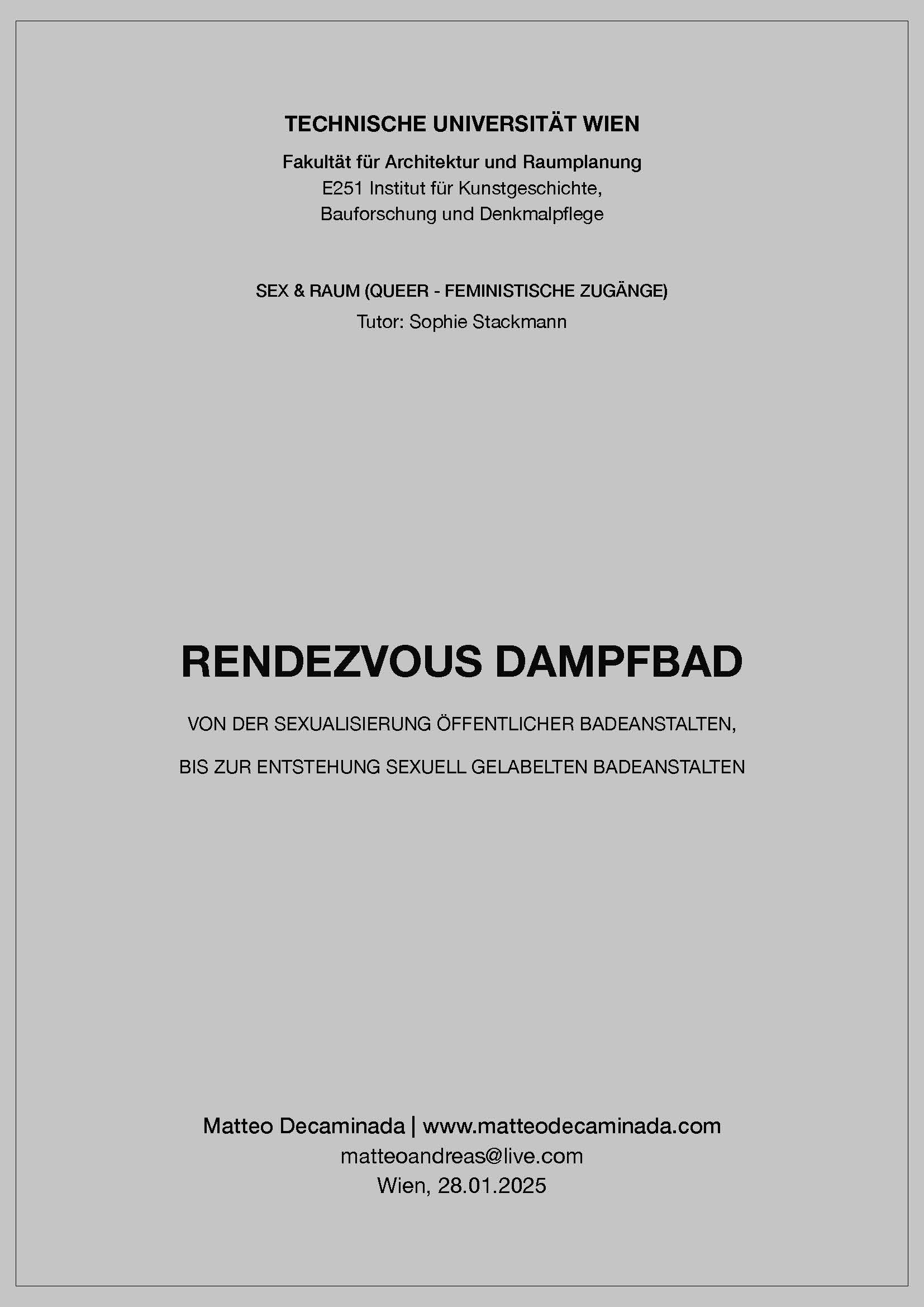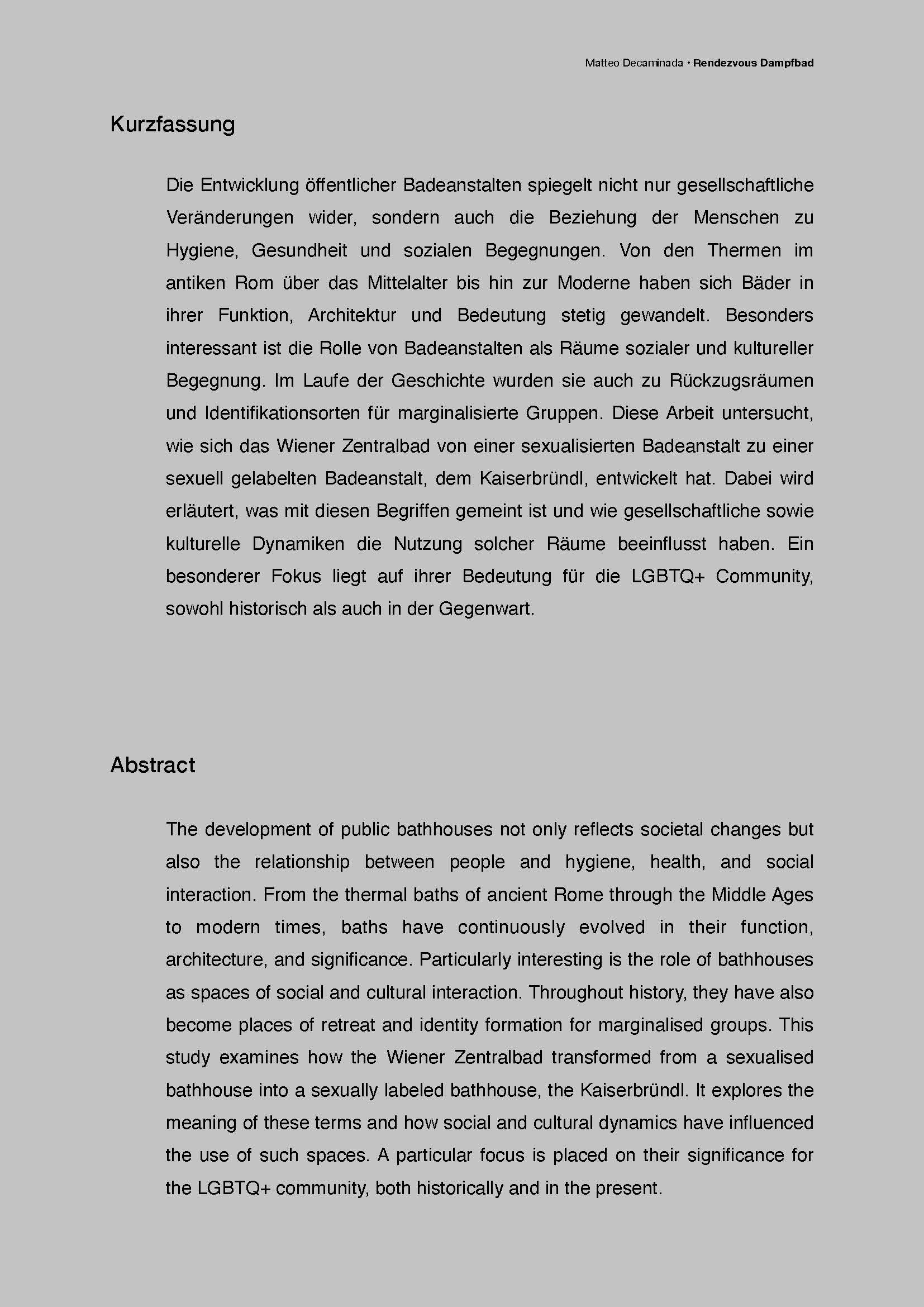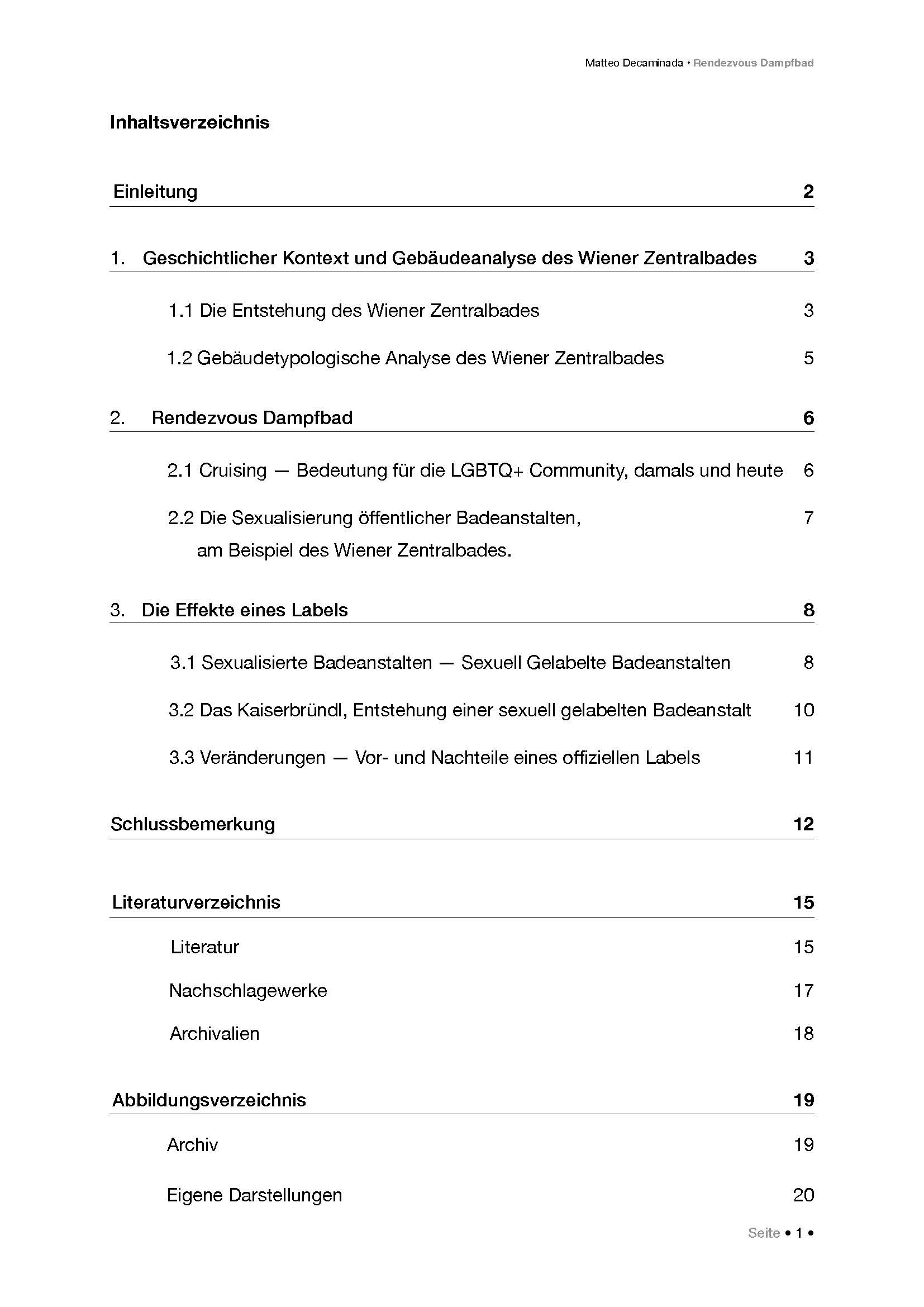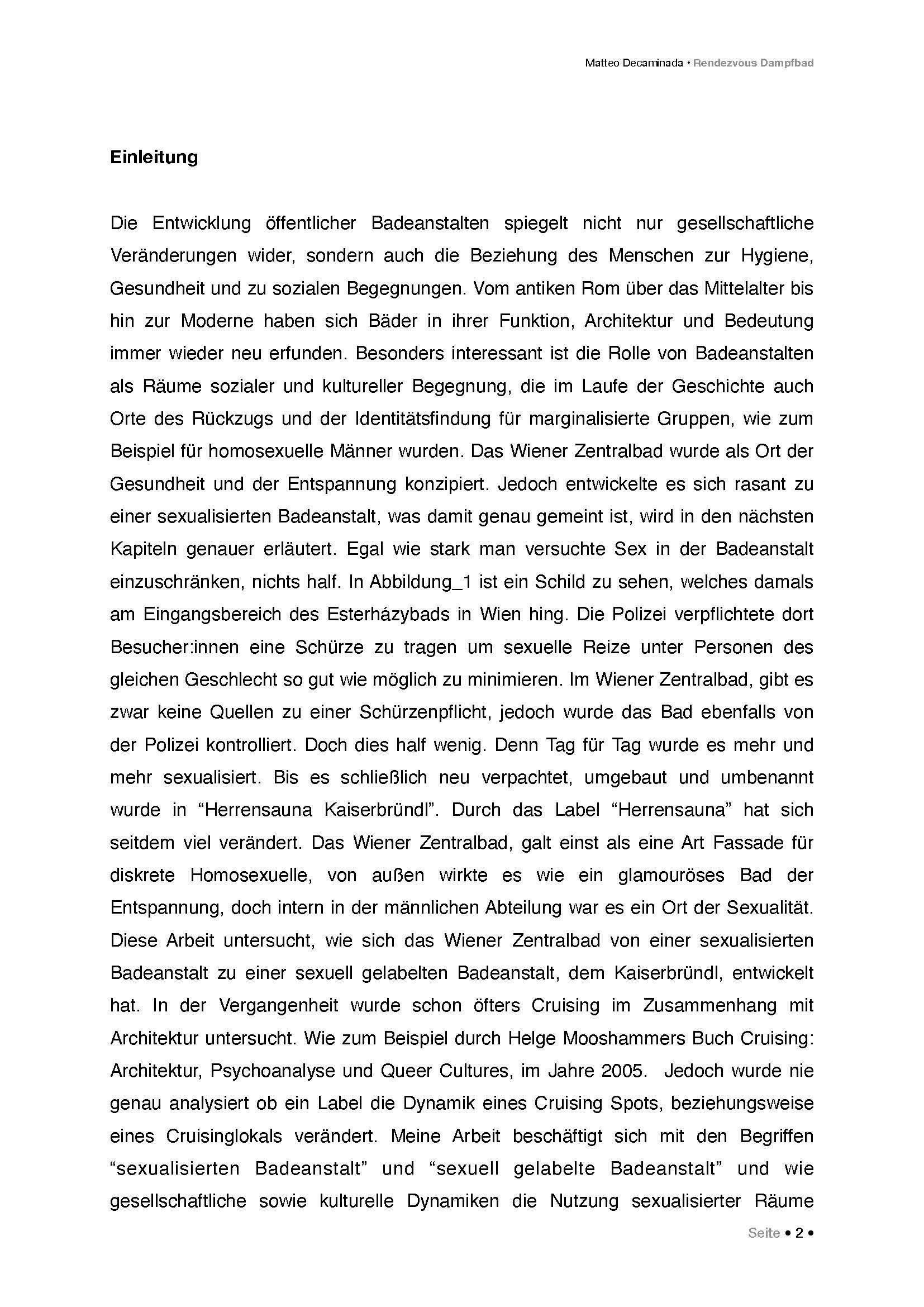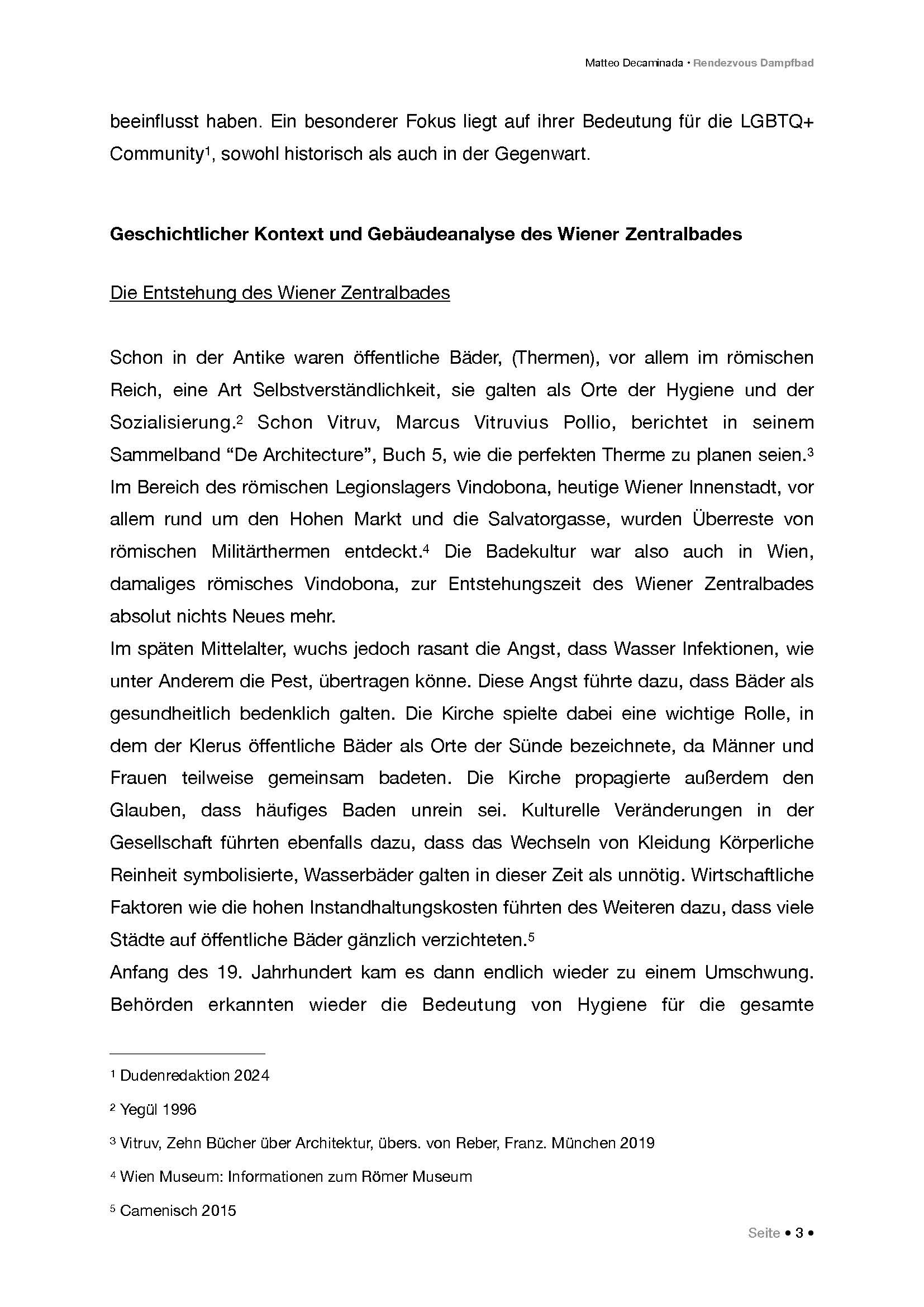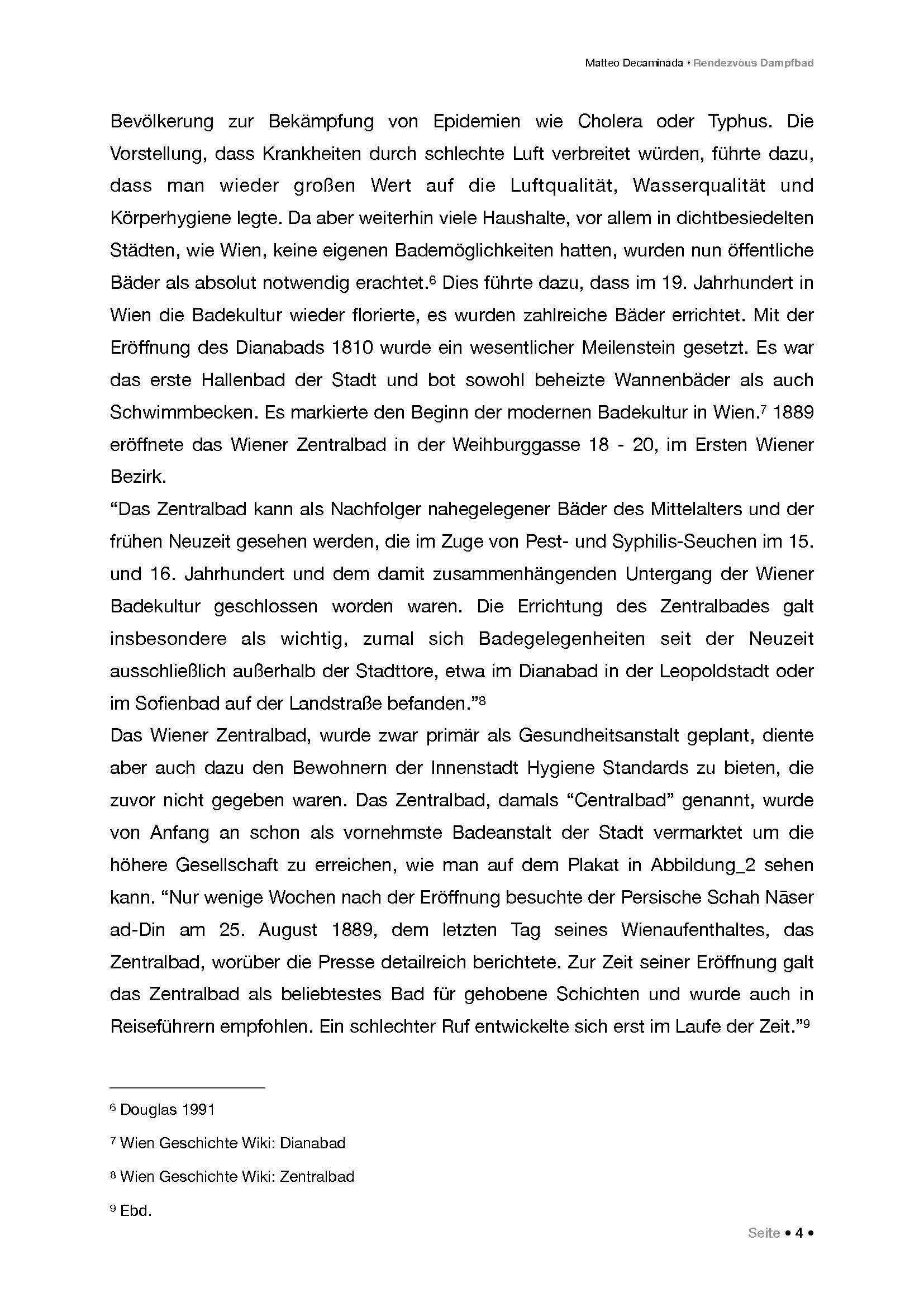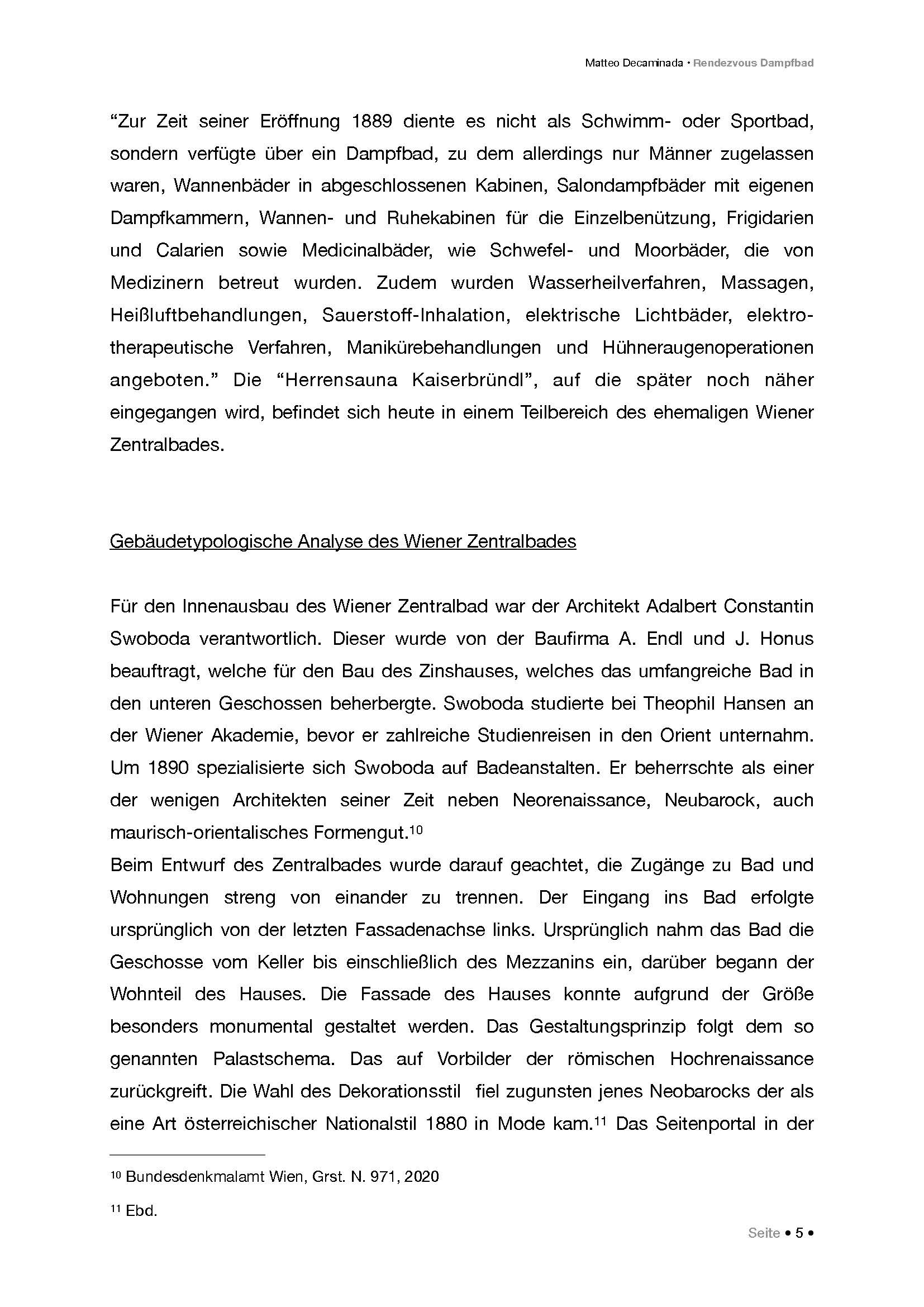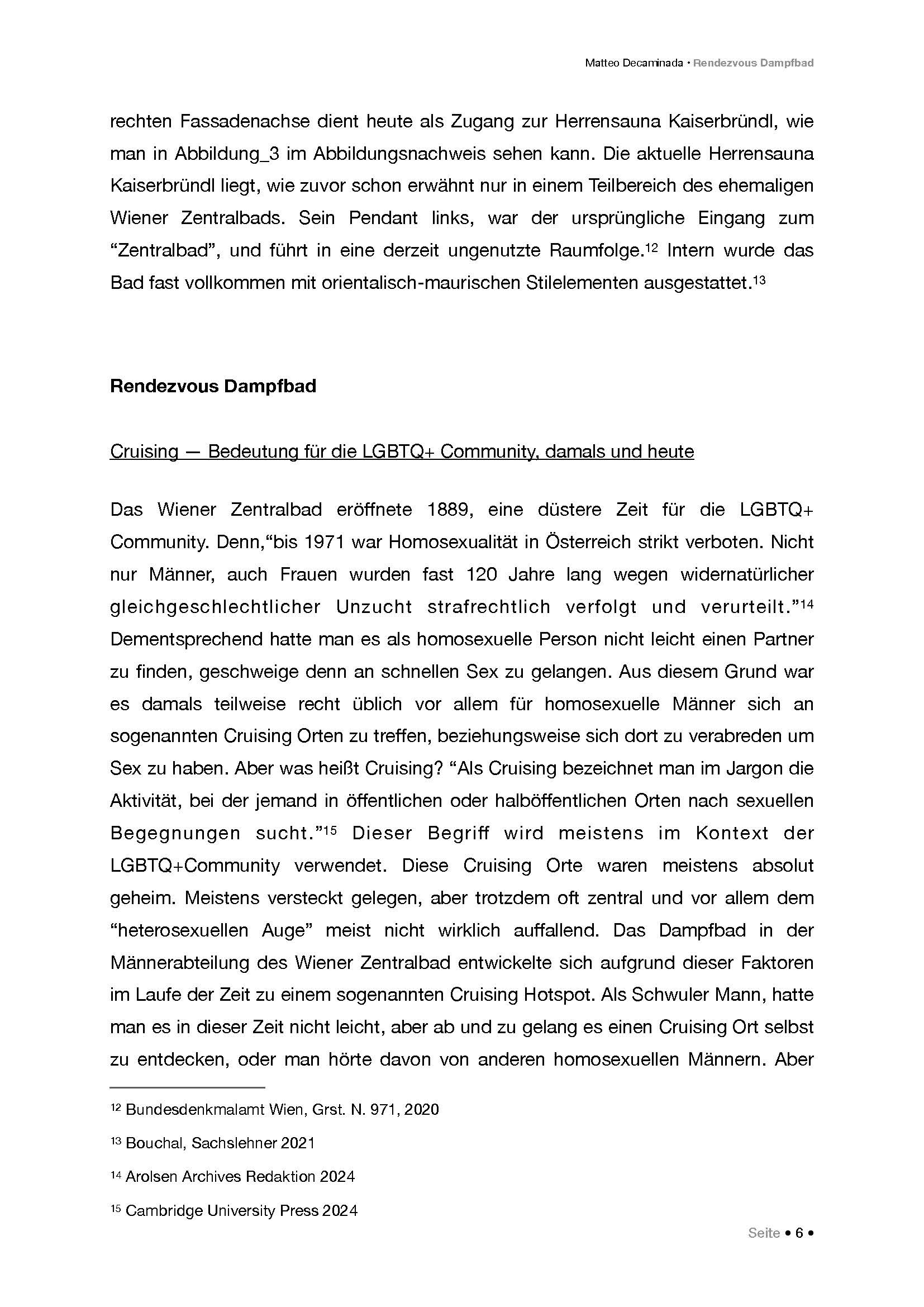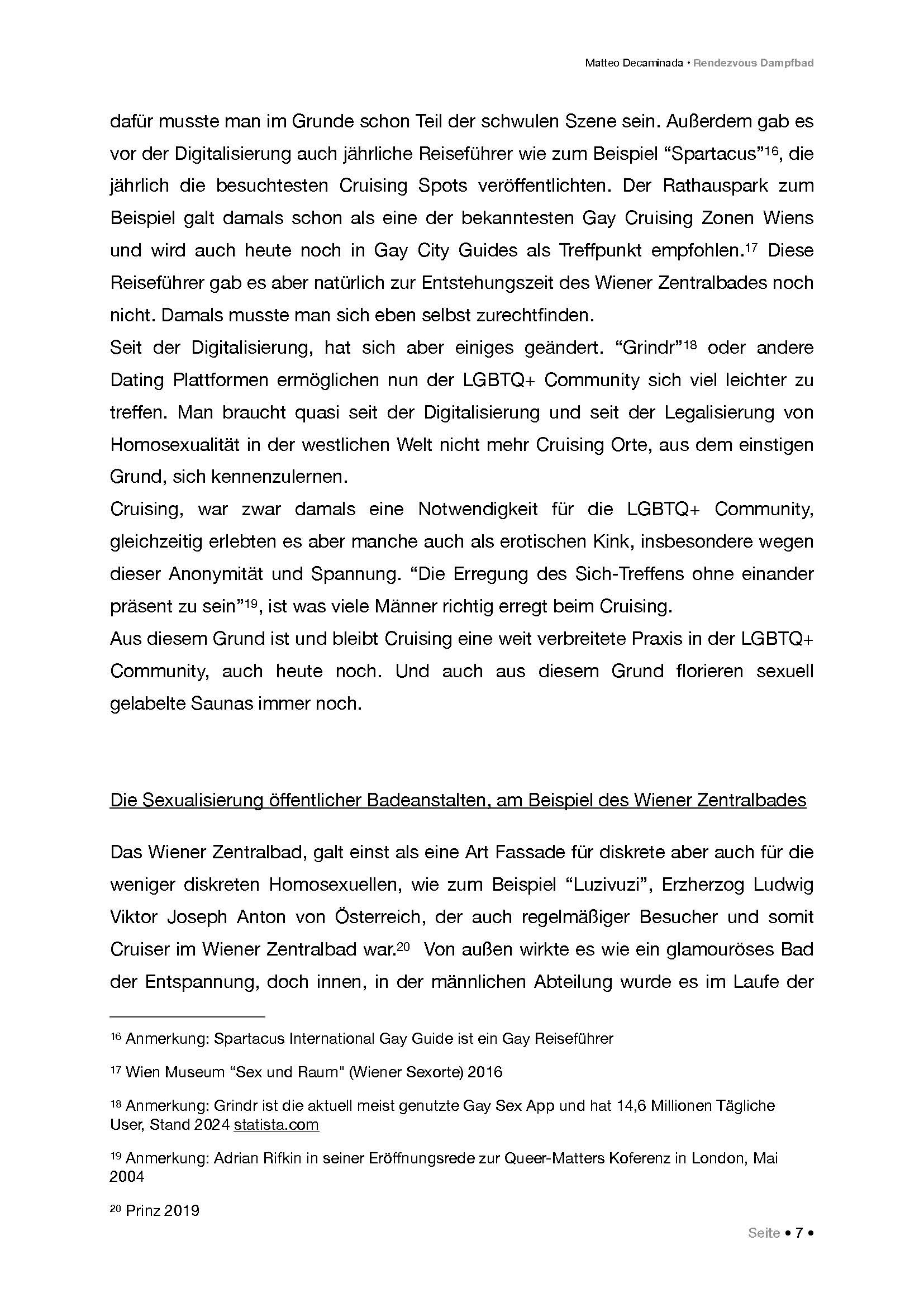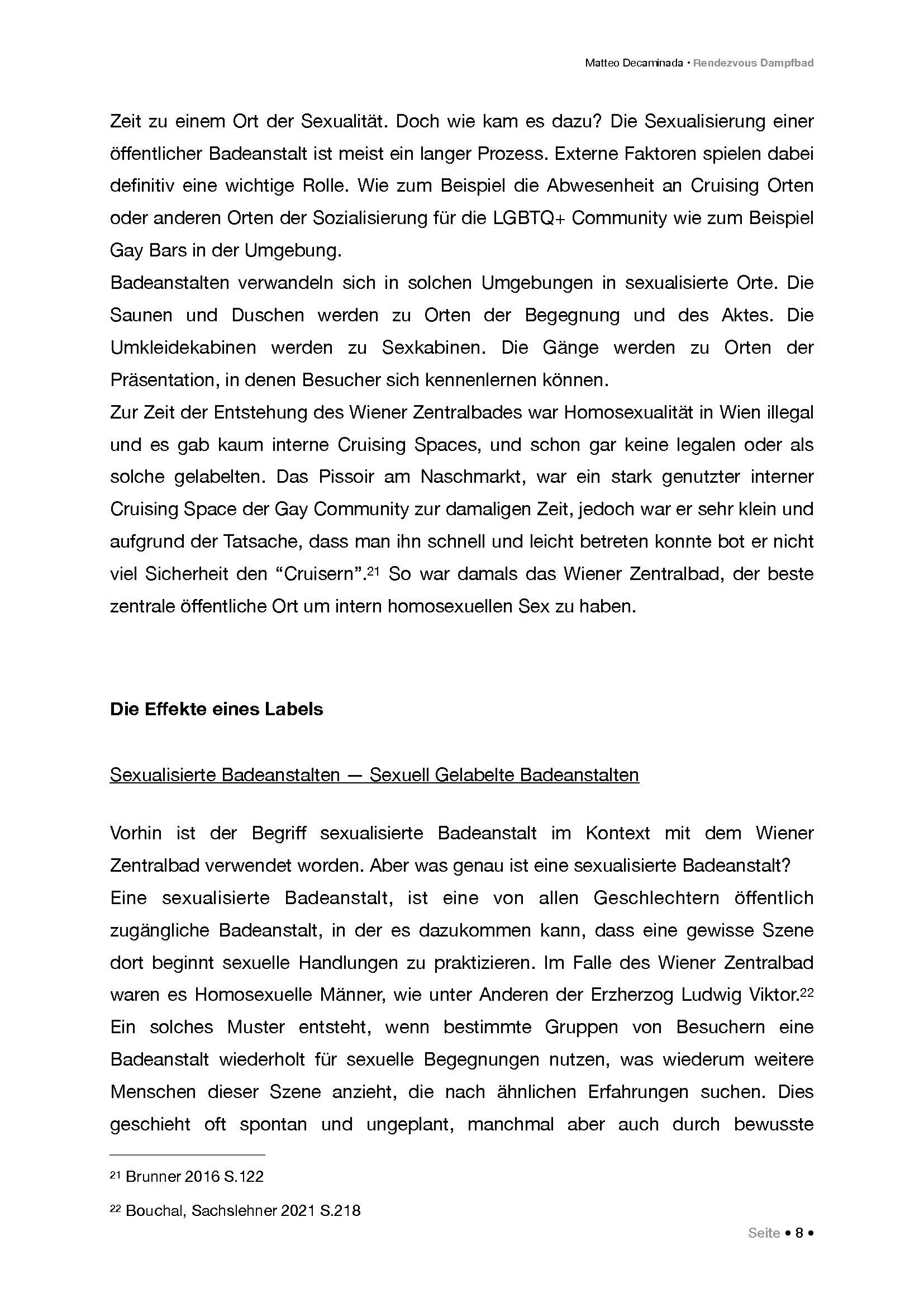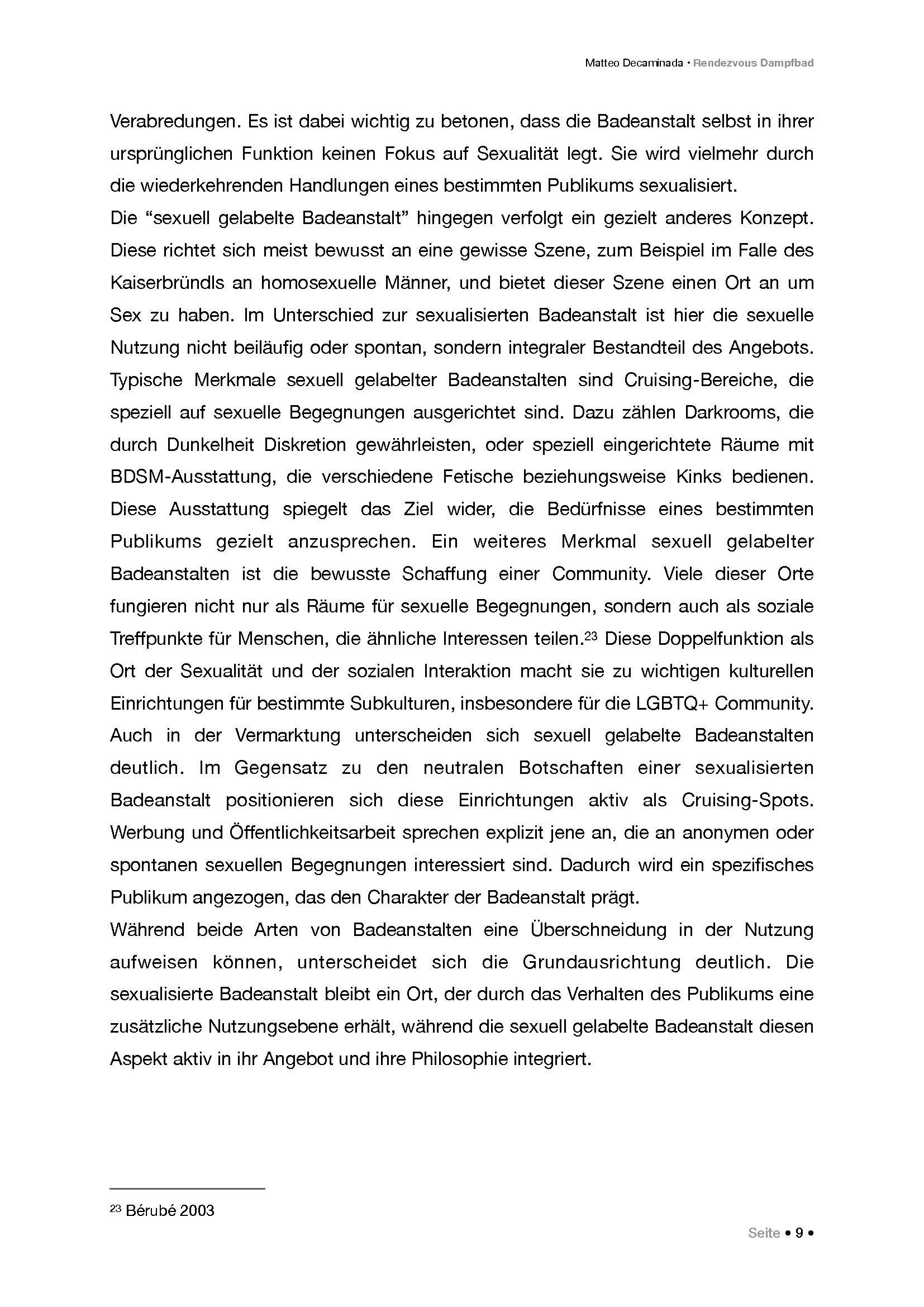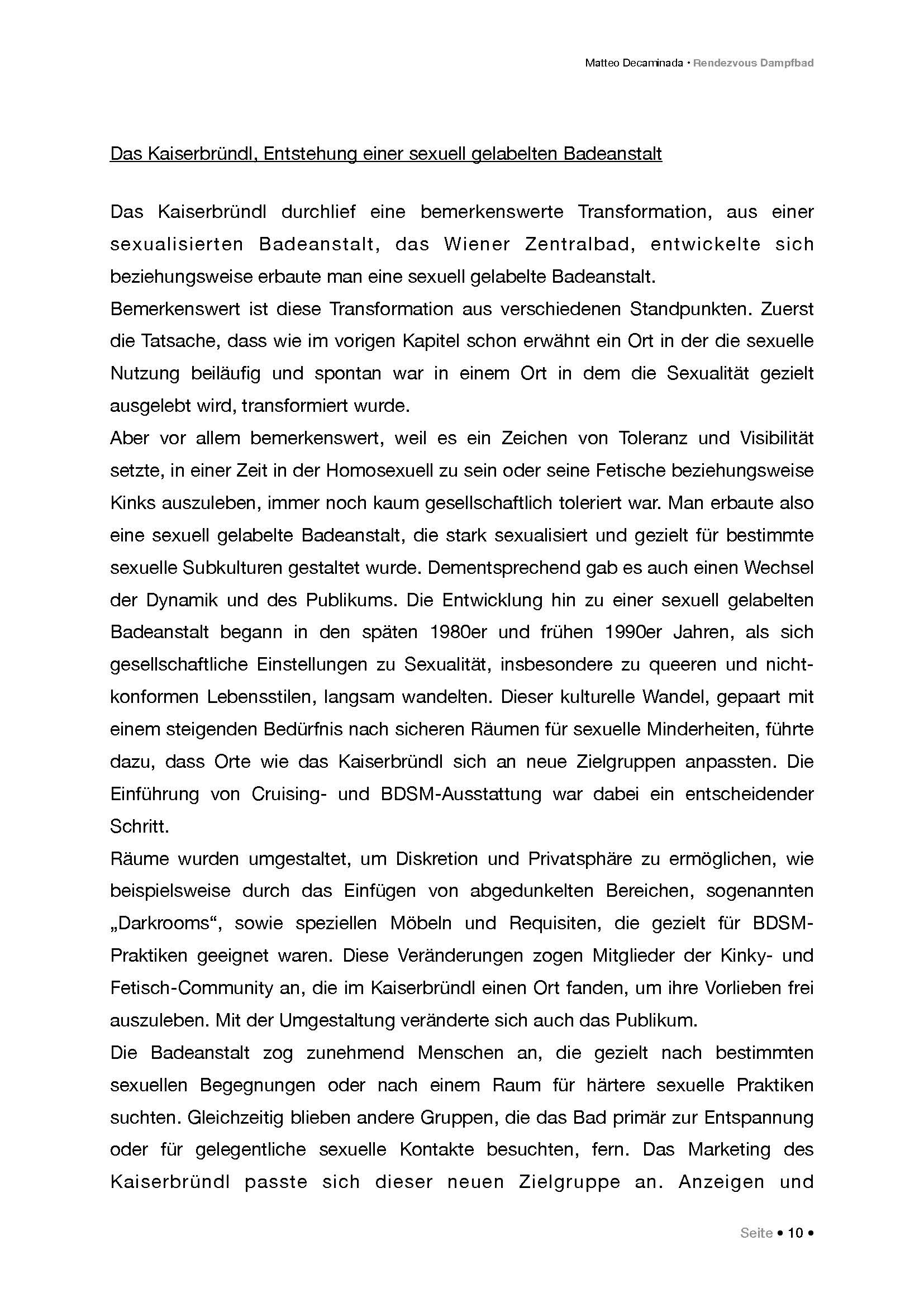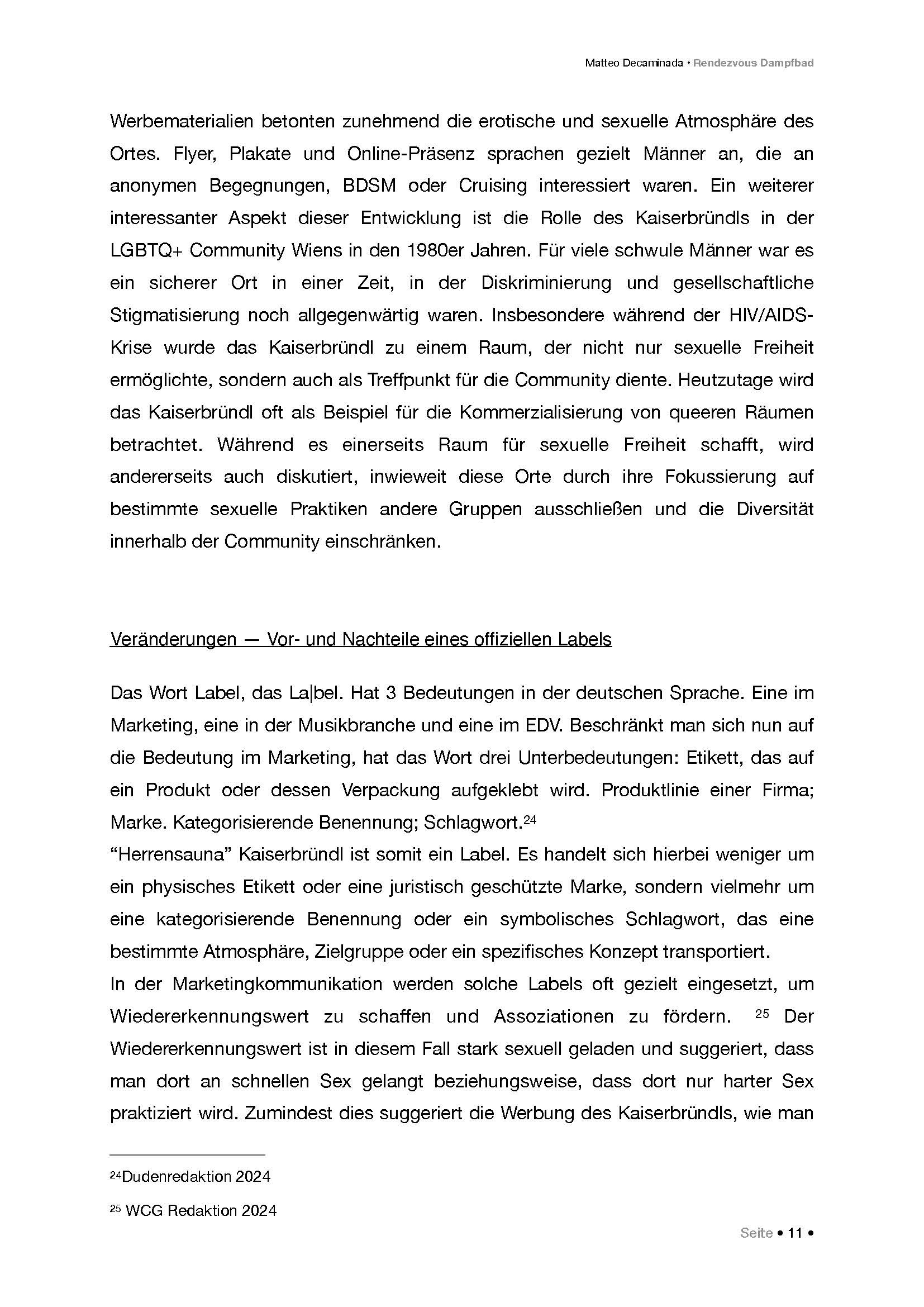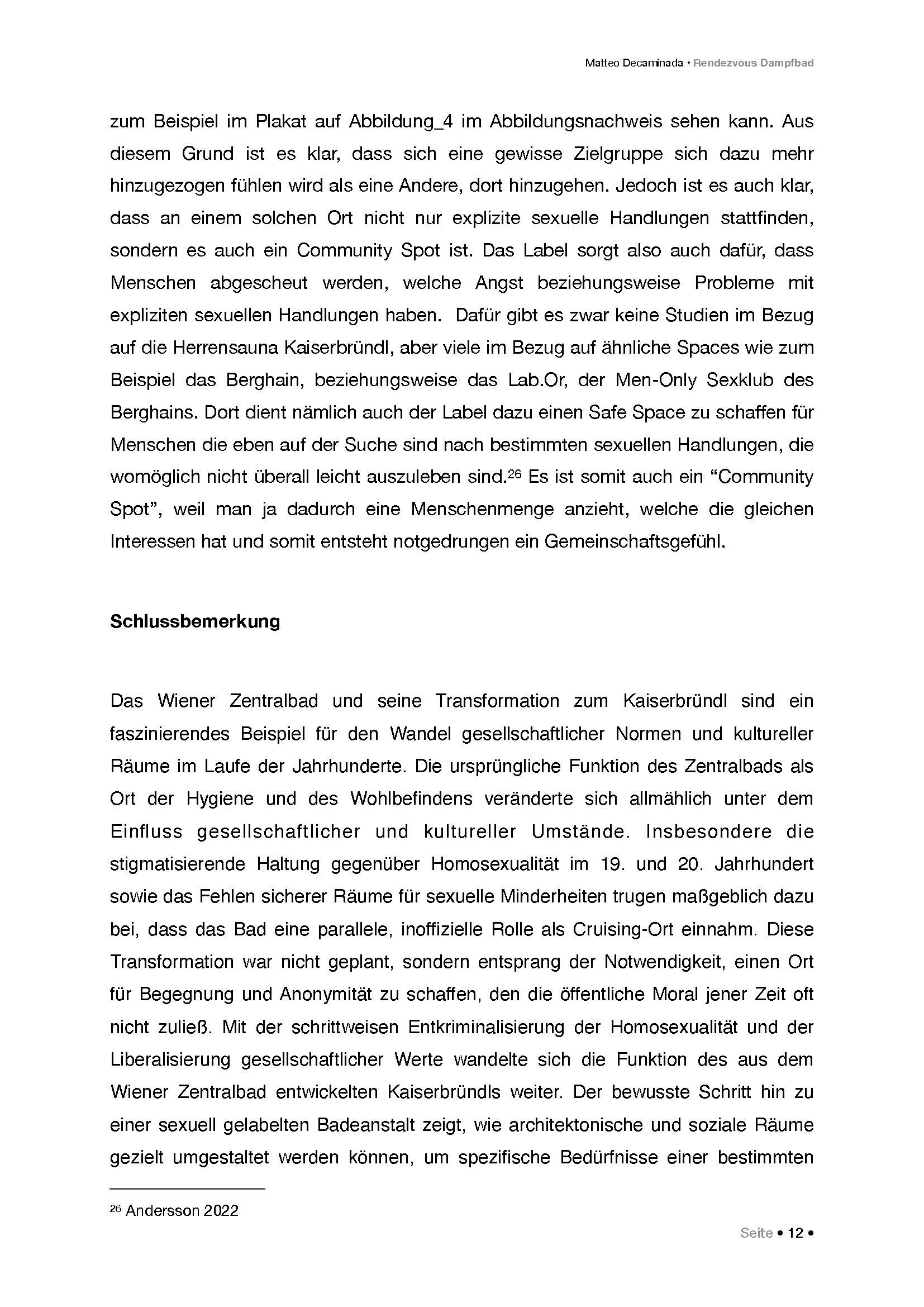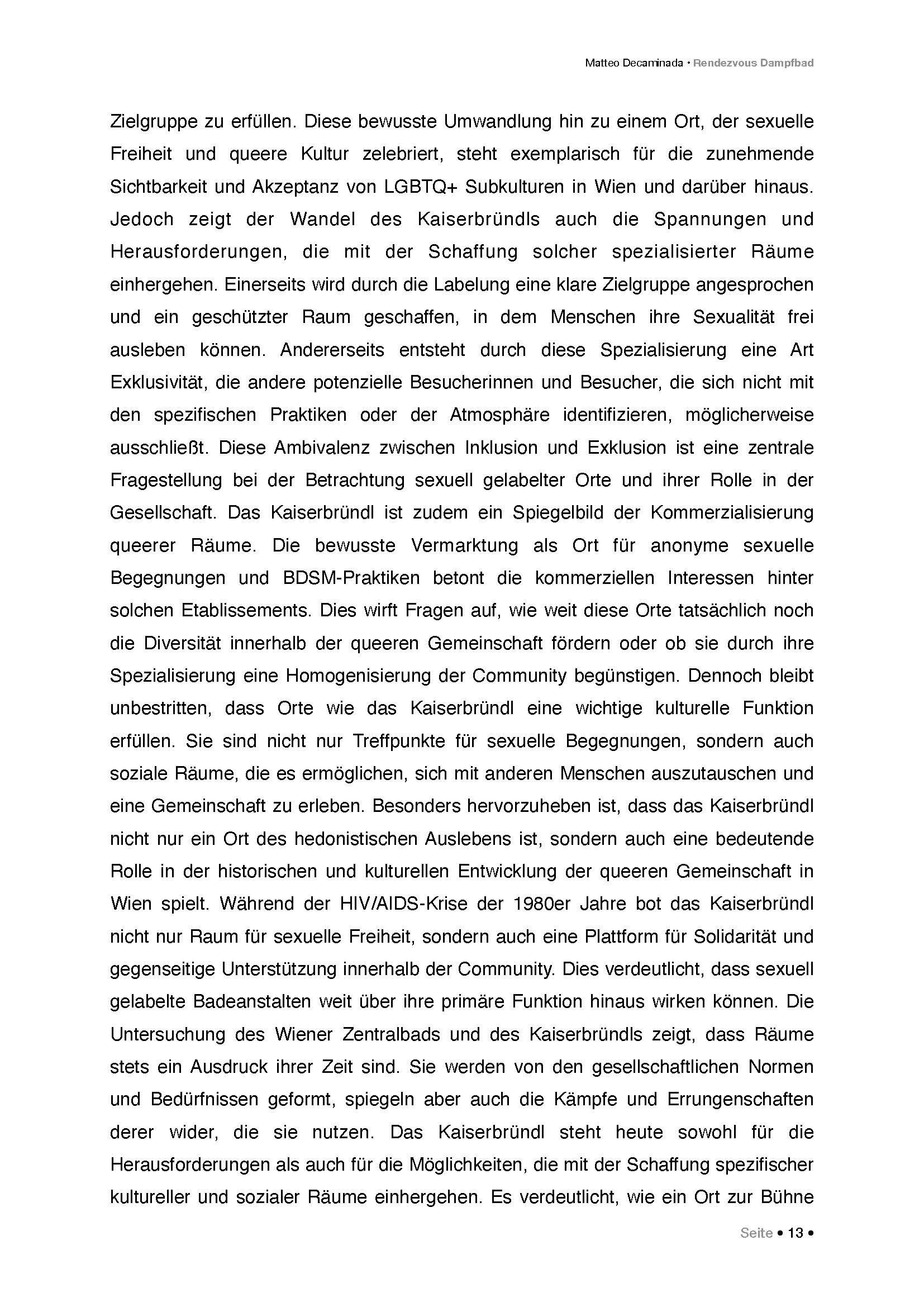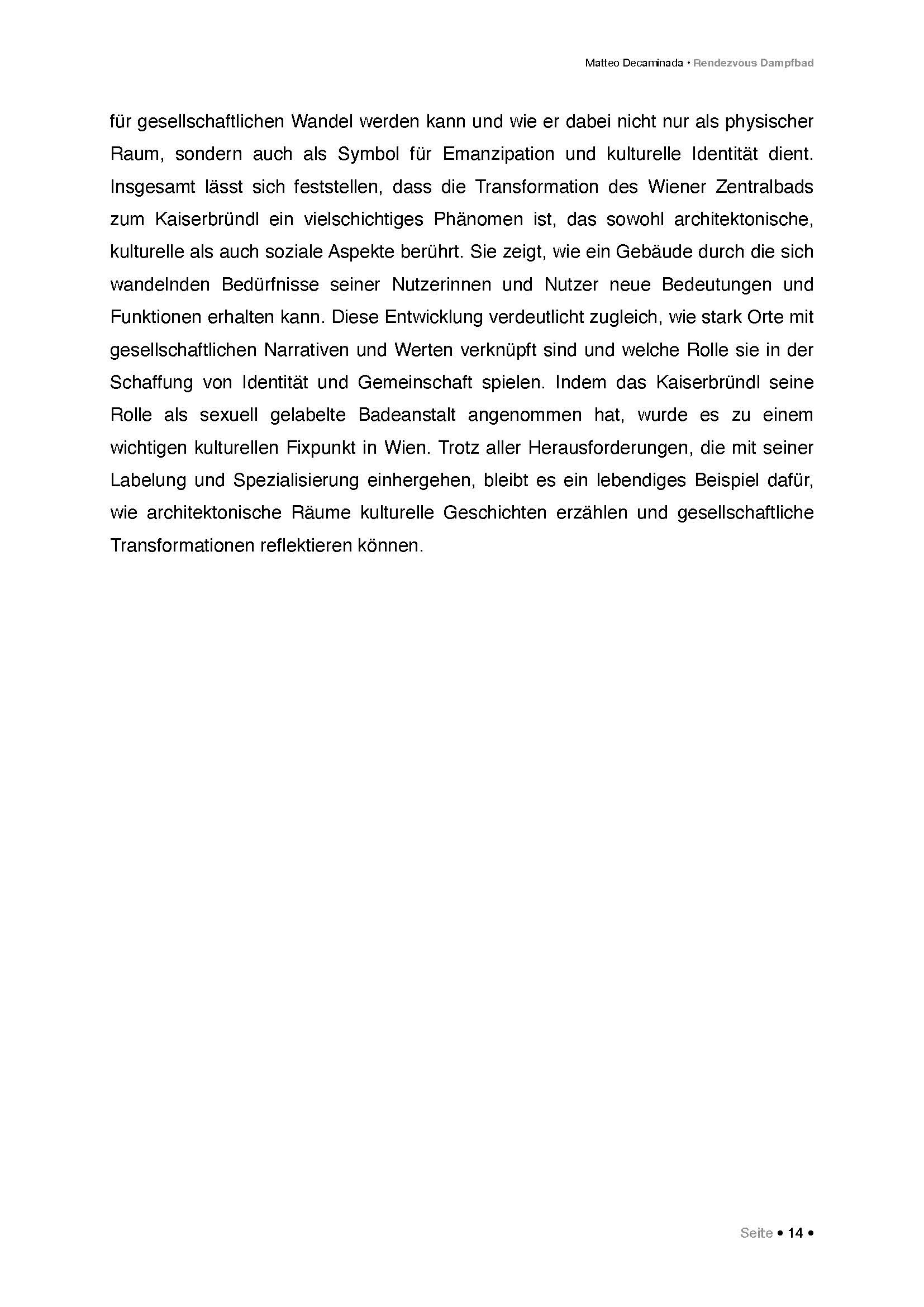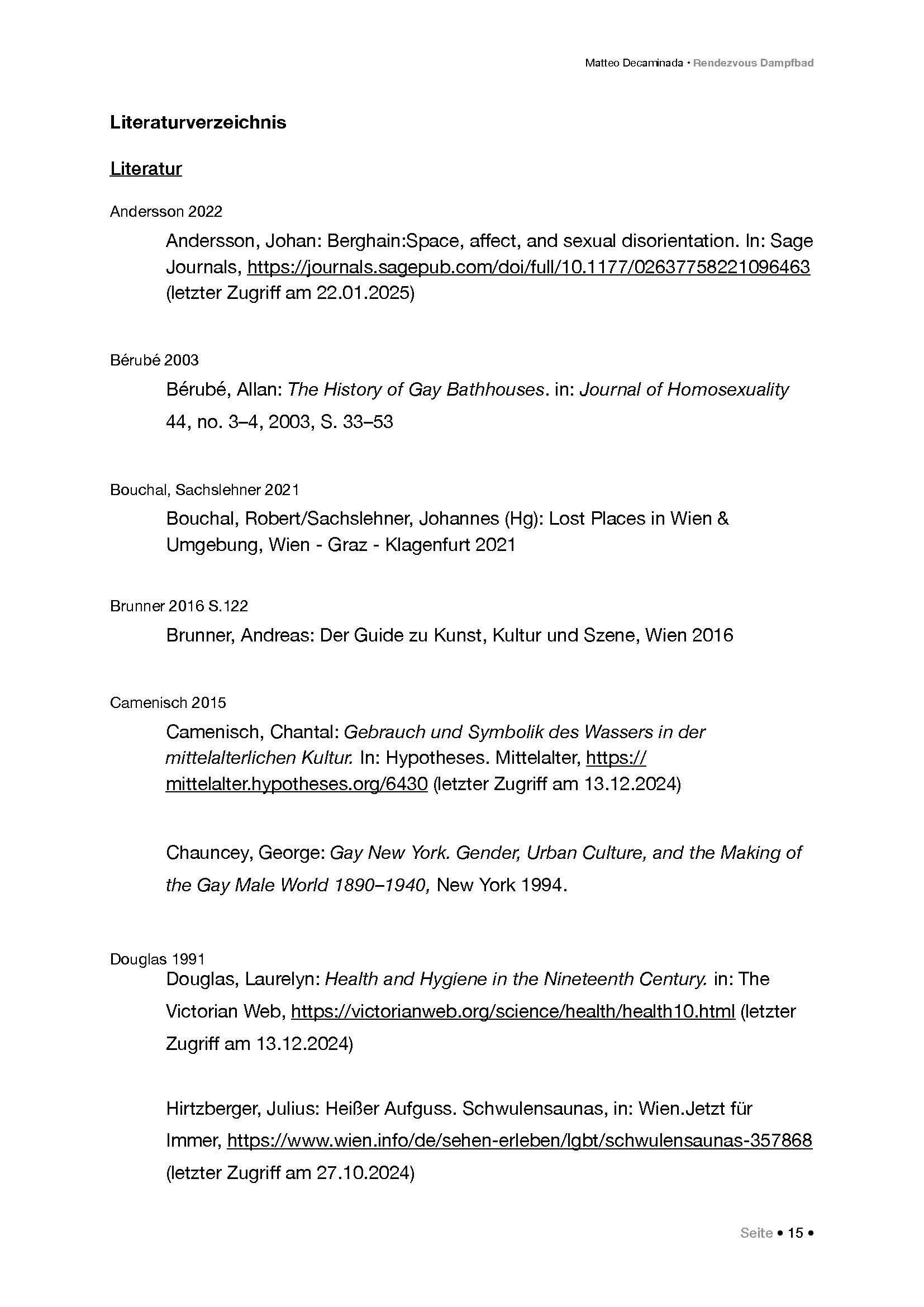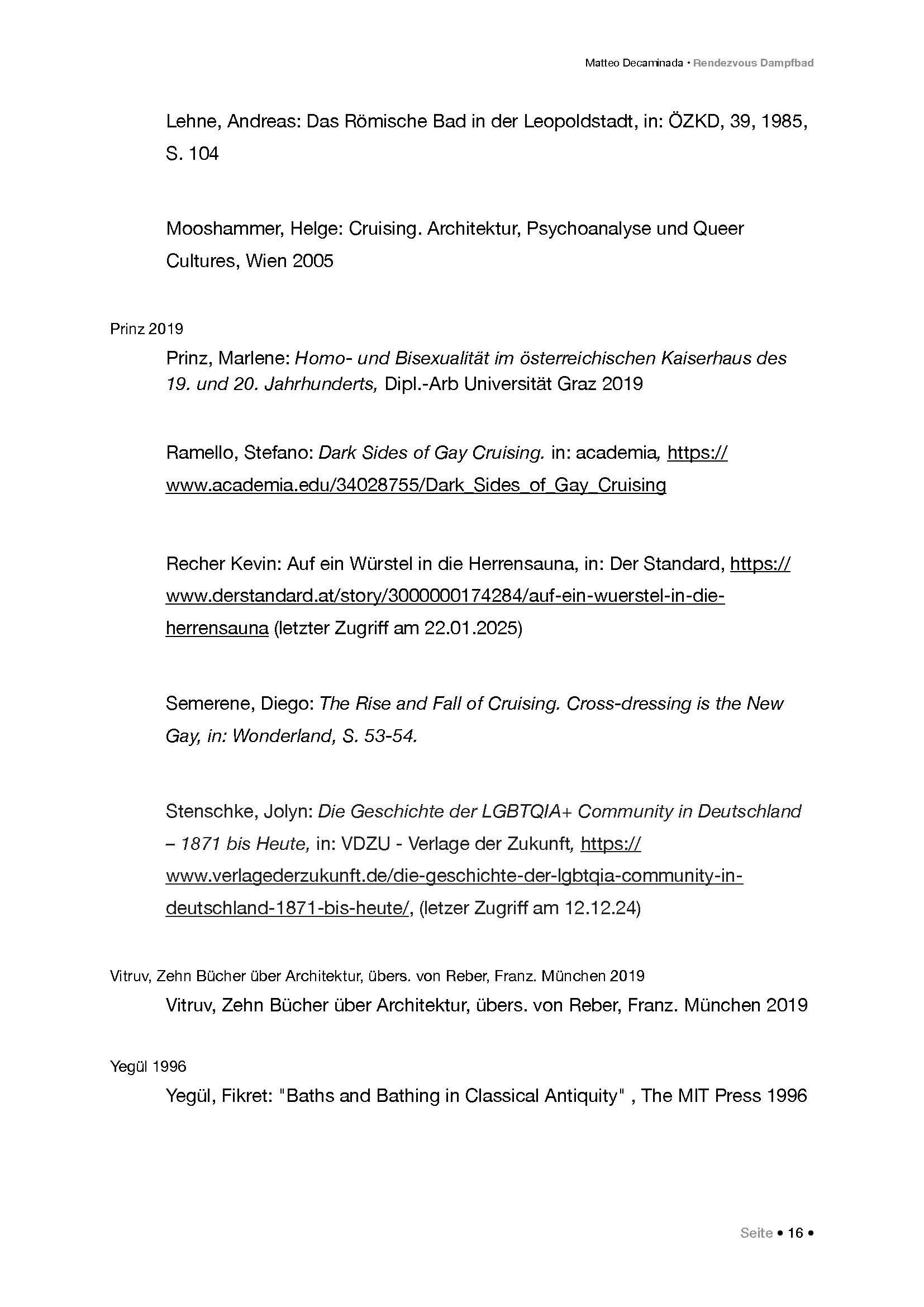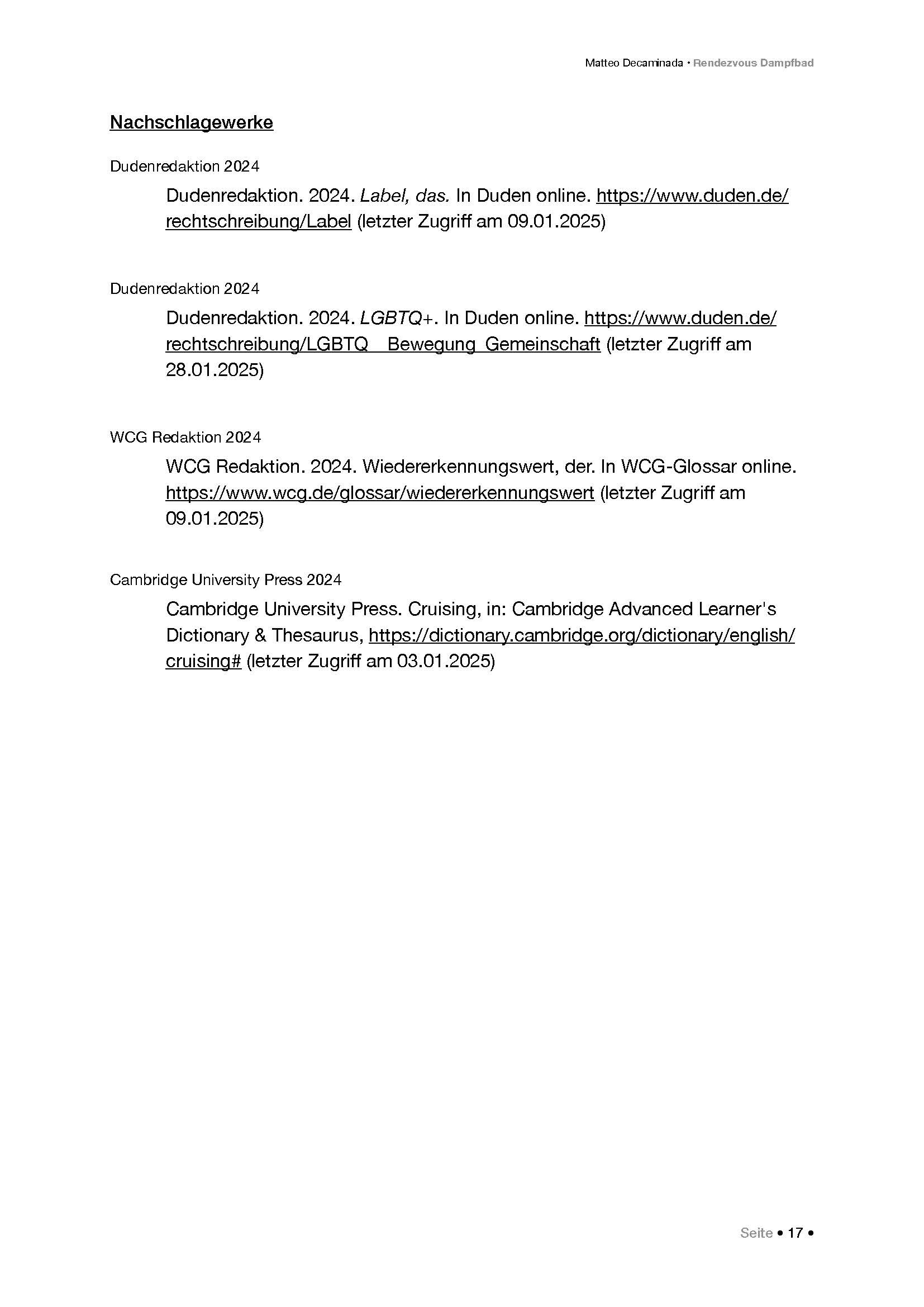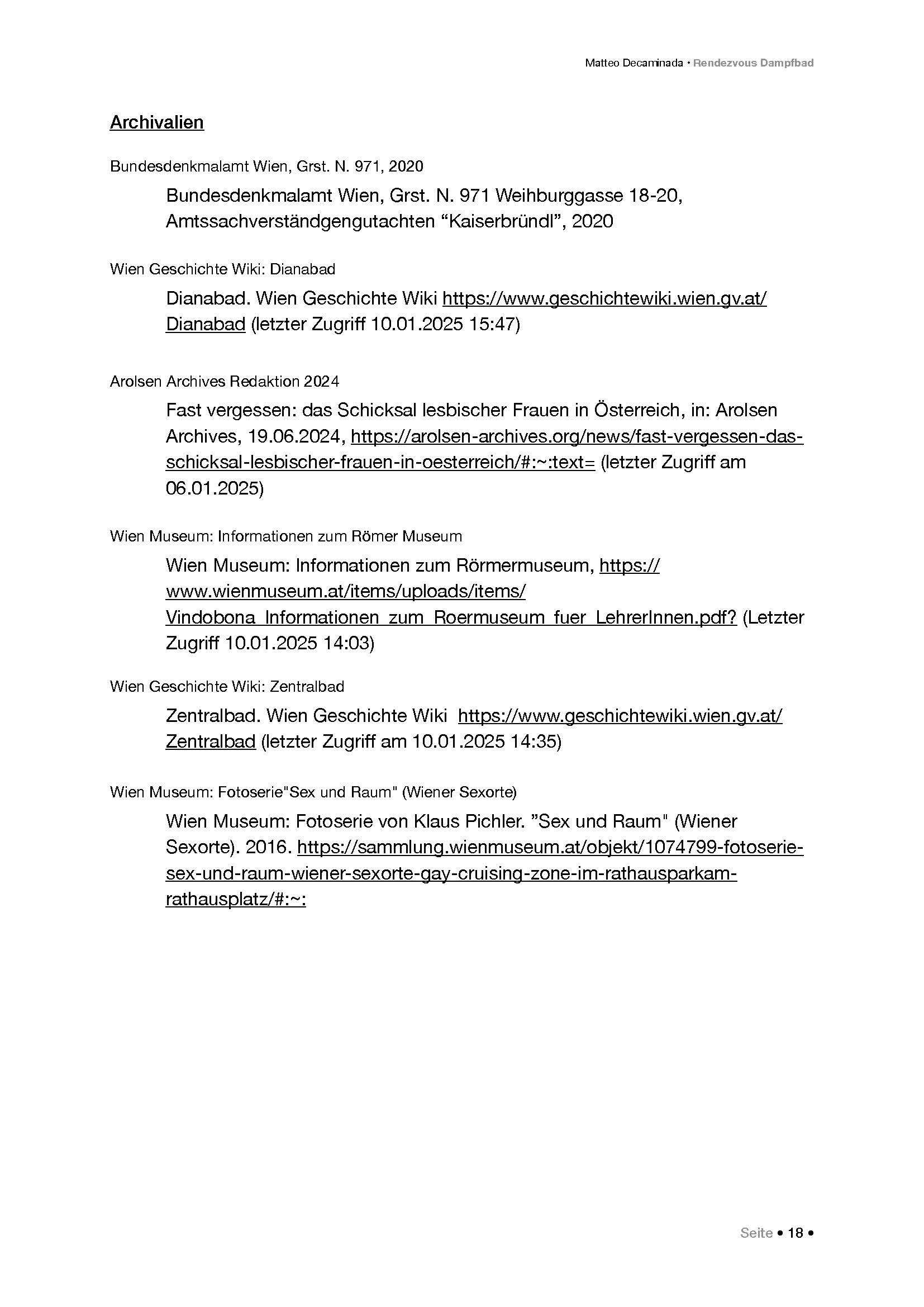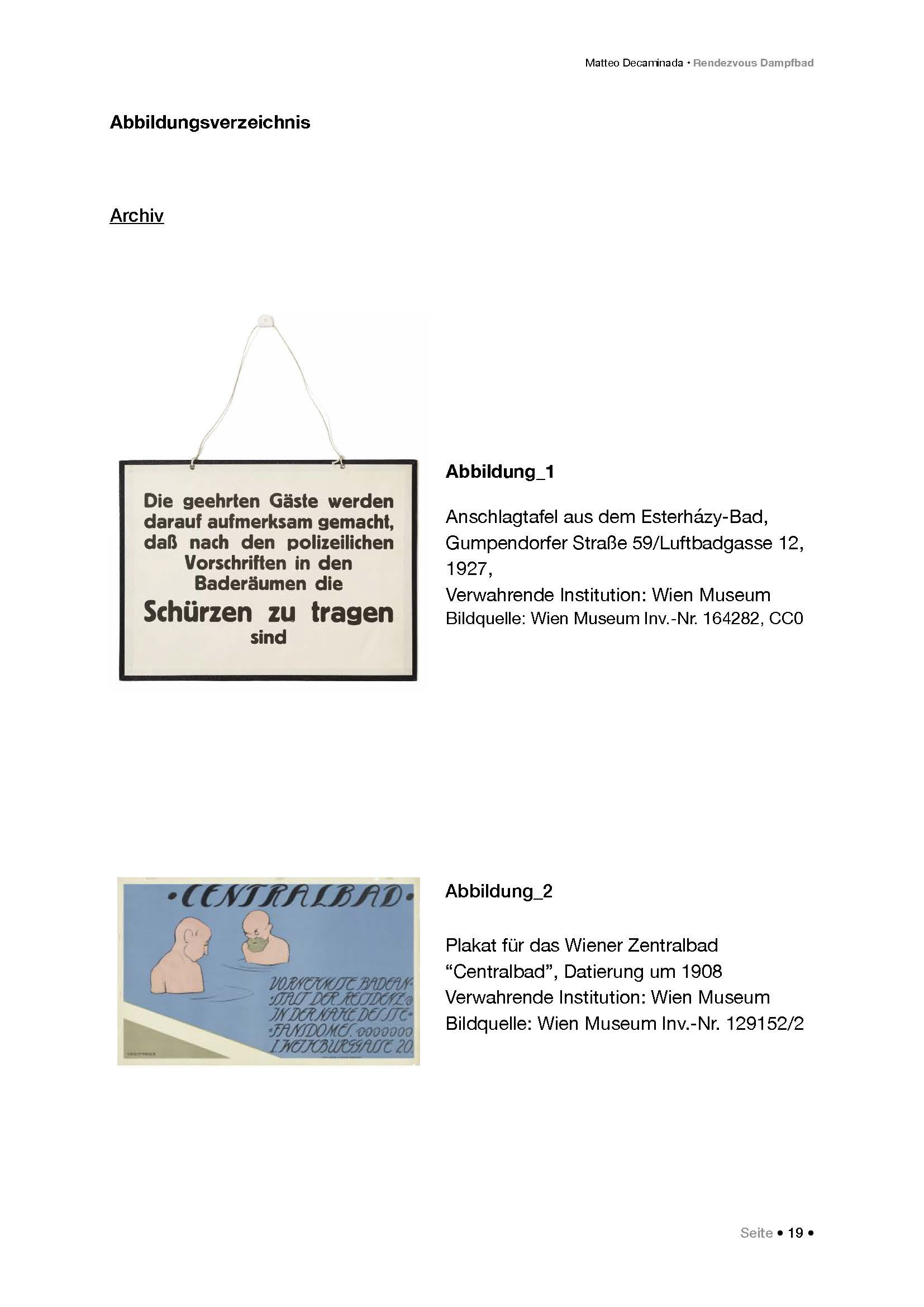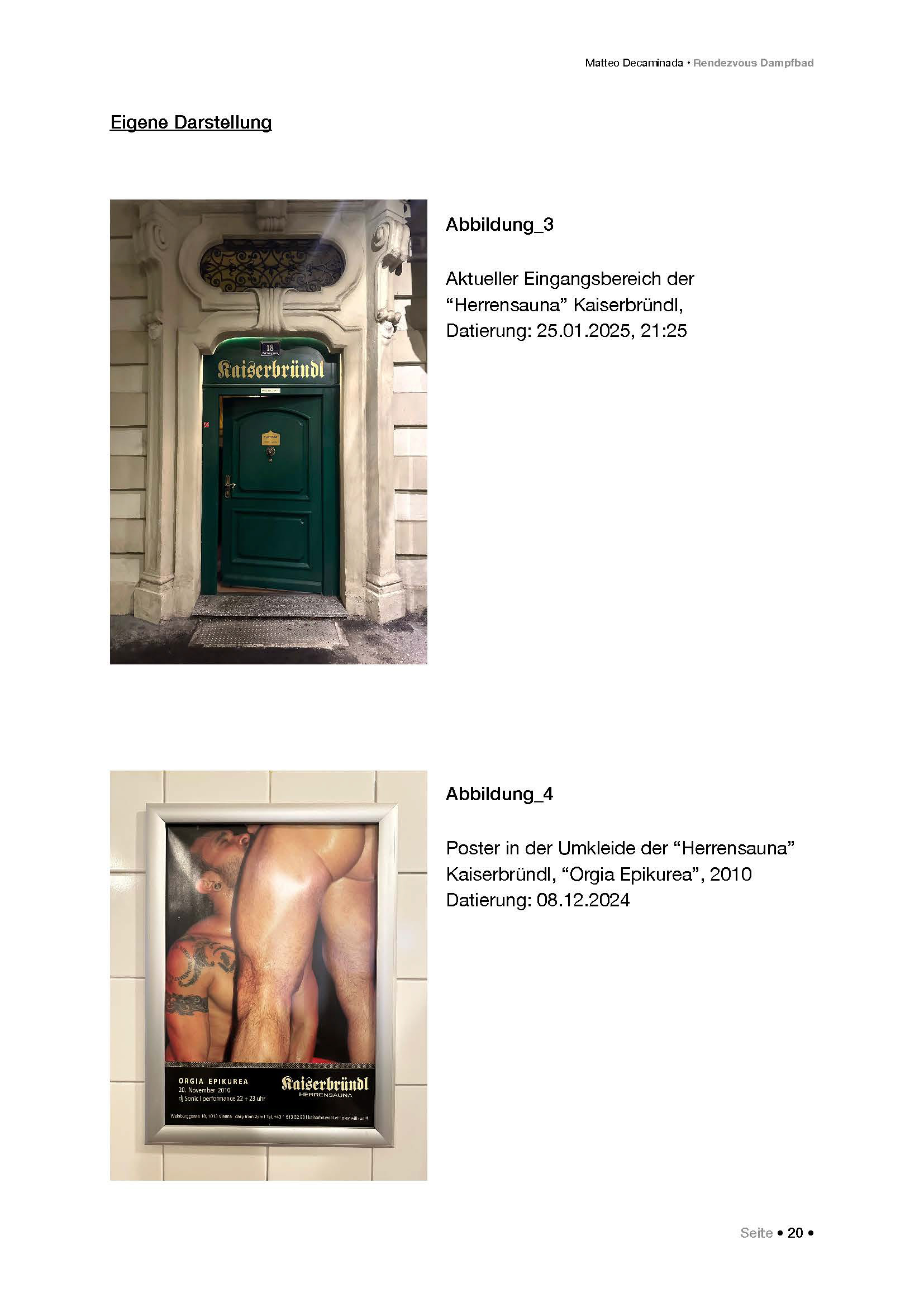ABSTRACT
The development of public bathhouses not only reflects societal changes but also the relationship between people and hygiene, health, and social interaction. From the thermal baths of ancient Rome through the Middle Ages to modern times, baths have continuously evolved in their function, architecture, and significance. Particularly interesting is the role of bathhouses as spaces of social and cultural interaction. Throughout history, they have also become places of retreat and identity formation for marginalised groups. This study examines how the Wiener Zentralbad transformed from a sexualised bathhouse into a sexually labeled bathhouse, the Kaiserbründl. It explores the meaning of these terms and how social and cultural dynamics have influenced the use of such spaces. A particular focus is placed on their significance for the LGBTQ+ community, both historically and in the present.
Kurzfassung
Die Entwicklung öffentlicher Badeanstalten spiegelt nicht nur gesellschaftliche Veränderungen wider, sondern auch die Beziehung der Menschen zu Hygiene, Gesundheit und sozialen Begegnungen. Von den Thermen im antiken Rom über das Mittelalter bis hin zur Moderne haben sich Bäder in ihrer Funktion, Architektur und Bedeutung stetig gewandelt. Besonders interessant ist die Rolle von Badeanstalten als Räume sozialer und kultureller Begegnung. Im Laufe der Geschichte wurden sie auch zu Rückzugsräumen und Identifikationsorten für marginalisierte Gruppen. Diese Arbeit untersucht, wie sich das Wiener Zentralbad von einer sexualisierten Badeanstalt zu einer sexuell gelabelten Badeanstalt, dem Kaiserbründl, entwickelt hat. Dabei wird erläutert, was mit diesen Begriffen gemeint ist und wie gesellschaftliche sowie kulturelle Dynamiken die Nutzung solcher Räume beeinflusst haben. Ein besonderer Fokus liegt auf ihrer Bedeutung für die LGBTQ+ Community, sowohl historisch als auch in der Gegenwart.
